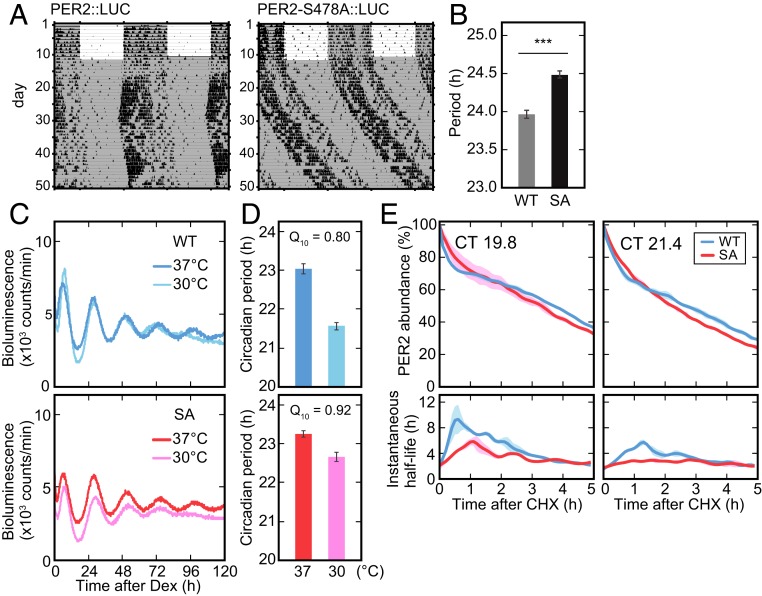Fig. 4.
The mutation of PER2 at Ser478 perturbs the phosphoswitch. (A) Wheel-running activities of representative PER2::LUC and PER2-S478A::LUC homozygous mice are shown. Mice were entrained to LD for 2 wk or longer and then exposed to DD. (B) The circadian period of the activity rhythms under the DD condition was determined via a χ2 periodogram procedure based on locomotor activity in days 11 to 24 after the start of DD condition. Mean values ± SEM obtained from 10 PER2::LUC mice (WT) and 10 PER2-S478A::LUC (SA) mice are given. ***P = 5.6 × e−7 (two-sided Student’s t test). (C) Representative recordings of bioluminescence from PER2::LUC or PER2-S478A::LUC MEFs are shown. MEFs were synchronized with dexamethasone, and the bioluminescence was then continually measured in the Lumicycle. (D) The circadian period of cellular rhythms was calculated. Mean values ± SEM obtained from three PER2::LUC MEFs (WT) and three PER2-S478A::LUC (SA) MEFs are given. (E) Bioluminescence from PER2::LUC (WT) and PER2-S478A::LUC (SA) MEFs are shown. MEFs were synchronized with dexamethasone, and the bioluminescence was continually measured in the Lumicycle. CHX (40 µg/mL) was added at CT19.8 (Left) or at CT21.4 (Right). By fitting the exponential curve to the small segment of the decay curves, the instantaneous half-life is calculated (see Materials and Methods for details). Colored ranges represent SEs of curves from their means (n = 3 to 4).

